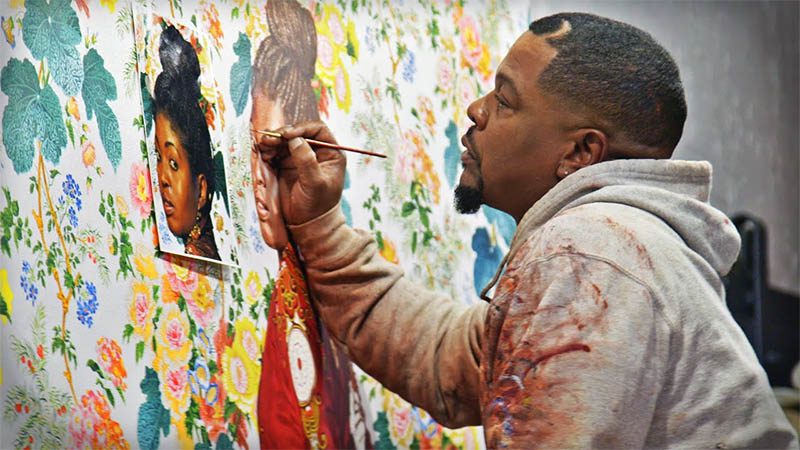
Renowned for his iconic portrait of Barack Obama, artist Kehinde Wiley has dedicated his artistic career to capturing the vibrancy of everyday Black people. His latest exhibition, “An Archaeology of Silence,” delves into themes of grief, mourning, and the inherent value of living. In an interview with Jeffrey Brown for PBS’s arts and culture series, CANVAS, Wiley shares insights into his thought-provoking work.
The exhibition, held at San Francisco’s de Young Museum, features 25 total works of paintings and sculptures that use the iconography of art history to shine a glaring light on today’s violence against Black men and women.
The official description of the exhibit reads:
American artist Kehinde Wiley’s new body of paintings and sculptures confronts the silence surrounding systemic violence against Black people through the visual language of the fallen figure. It expands on his 2008 series, Down — a group of large-scale portraits of young Black men inspired by Hans Holbein the Younger’s The Dead Christ in the Tomb (1521–1522).
Wiley investigates the iconography of death and sacrifice in Western art, tracing it across religious, mythological, and historical subjects. In An Archaeology of Silence, the senseless deaths of men and women around the world are transformed into a powerful elegy of resistance. The resulting paintings of figures struck down, wounded, or dead, referencing iconic paintings of mythical heroes, martyrs, and saints, offer a haunting meditation on the legacies of colonialism and systemic racism.

“There’s a tradition, and I love the tradition of painting that comes from Western Europe,” said Wiley.” I have spent much of my life learning it and trying to master it. And in a lot of that stuff, I see sadness, but I also see dignity and respect. I see people looking at the life of Christ or the life of a fallen soldier and valuing their lives so much to make really great, beautiful works of art out of it.”
Wiley’s intention was to use the language that he saw throughout European art history of “the epic, the heroic, even the elegiac, the sort of sadness that surrounds a lot of these big monuments,“ and direct it towards people who looked like him.
“I don’t know. Is it a sad show, or is there something here that says that there’s a bit of growth and a bit of light in the midst of all this sadness?” he mused.
Watch the full PBS segment below:
“An Archaeology of Silence” by Kehinde Wiley runs through October 15. Learn more by visiting the San Francisco de Young Museum website.
As an independent magazine with a small team, we rely on the support of our readers to keep JARO’s content free and accessible to everyone. Please support our ability to continue delivering the best of the African Diaspora with a donation as little as $1. Thank you!







